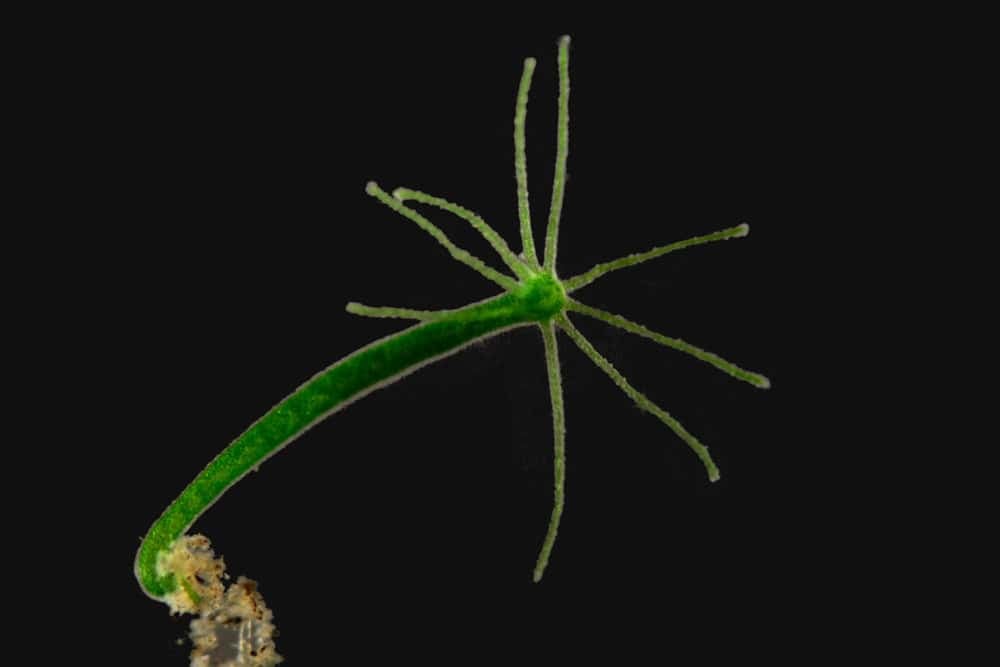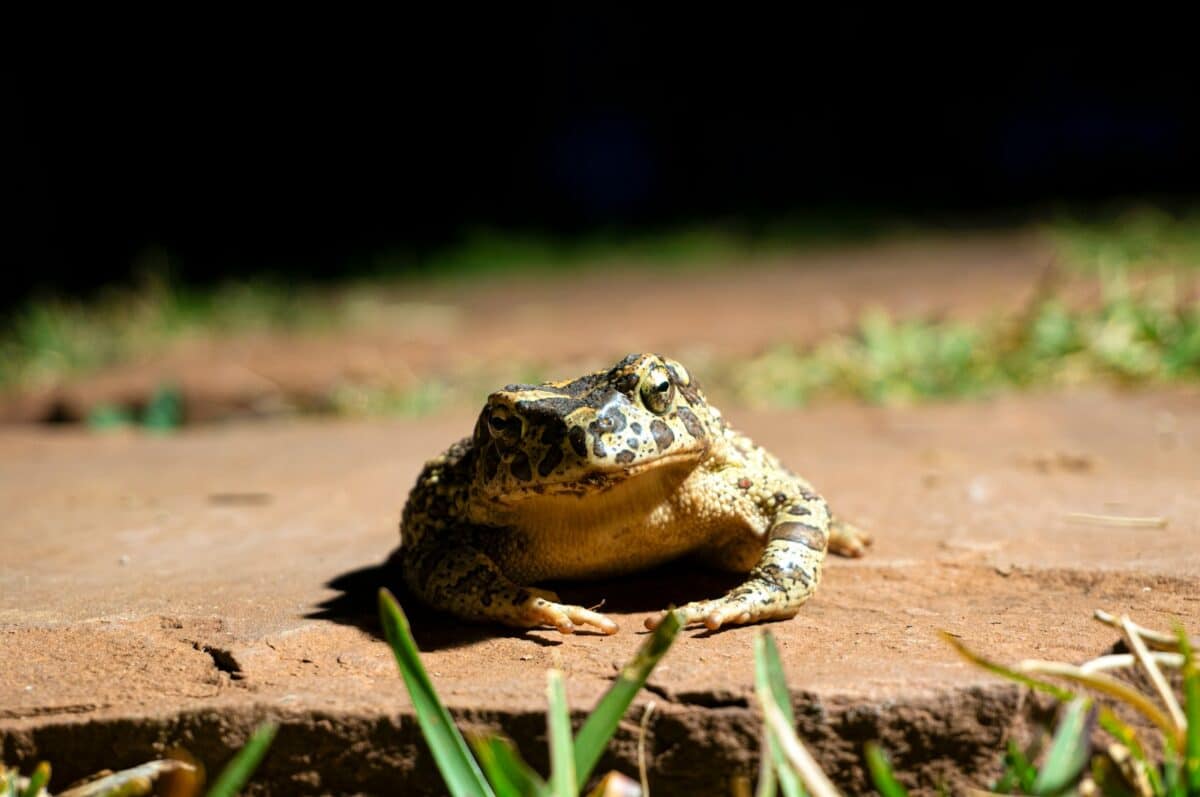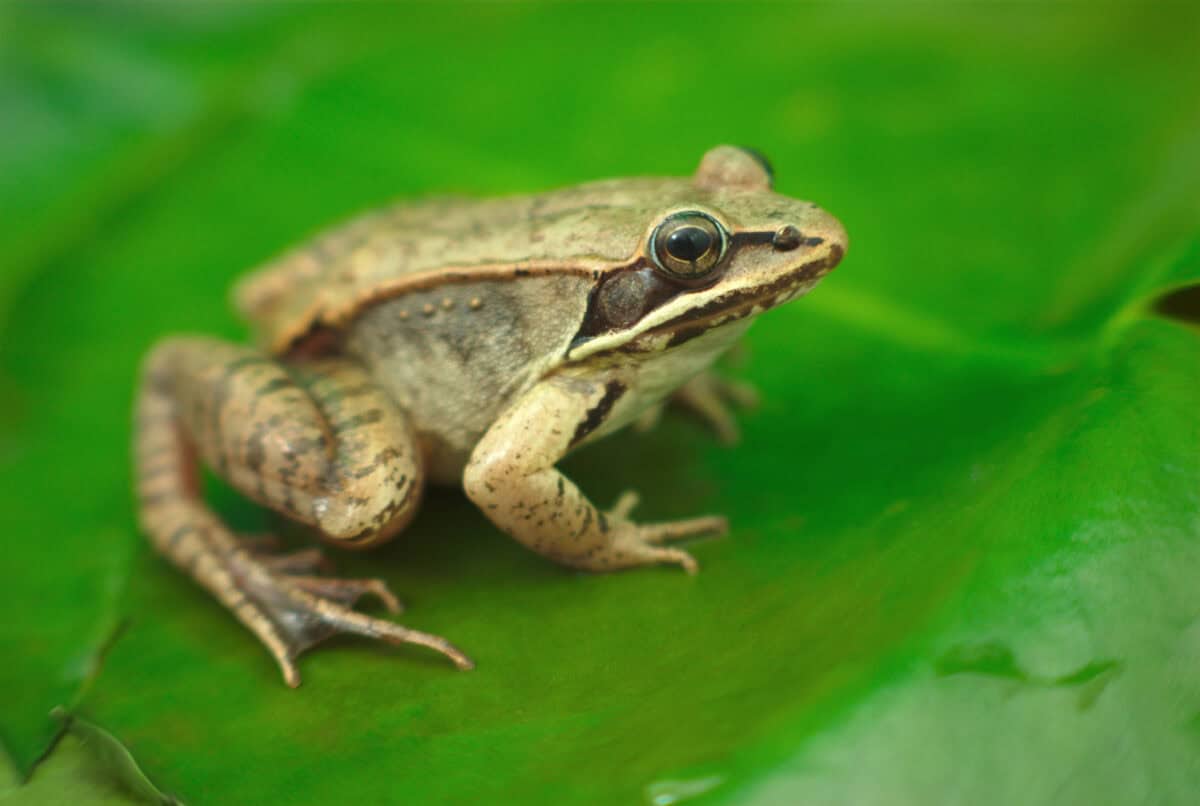Nature is an incredible designer, equipping animals with astonishing adaptations that allow them to thrive in their environments. While we’re familiar with a cheetah’s speed or a chameleon’s color-changing ability, the animal kingdom harbors countless lesser-known evolutionary marvels that deserve recognition. These adaptations, perfected over millions of years, showcase nature’s ingenuity in solving ecological challenges. From bizarre defense mechanisms to surprising physiological features, these evolutionary innovations demonstrate just how creative natural selection can be. This article explores twelve fascinating animal adaptations that rarely make headlines but represent some of evolution’s most impressive work.
12. The Hairy Frog’s Wolverine-Like Claws

The Trichobatrachus robustus, commonly known as the “hairy frog” or “horror frog,” possesses one of the most unusual defense mechanisms in the animal kingdom. When threatened, this Central African amphibian deliberately breaks its toe bones, pushing them through its skin to create sharp, claw-like structures. These makeshift weapons, resembling comic book hero Wolverine’s claws, serve as formidable defense tools against predators. Once the danger passes, the bones retract back into the frog’s toes, and the skin heals. This remarkable adaptation comes with a significant physiological cost, making it a true last-resort defense mechanism. Scientists are still puzzled about the exact mechanism that allows the bones to retract and the tissue to heal rapidly.
11. The Bombardier Beetle’s Chemical Warfare

The bombardier beetle has evolved a sophisticated chemical defense system that would impress military engineers. When threatened, this insect mixes two separate chemicals—hydrogen peroxide and hydroquinones—stored in separate chambers in its abdomen. When these chemicals combine in a specialized reaction chamber with catalytic enzymes, they create a violent exothermic reaction. The result? A boiling, caustic chemical spray that can be directed with remarkable precision at predators. The beetle’s internal “combustion chamber” can withstand temperatures reaching 100°C (212°F) during this reaction. Even more impressive, the insect can fire these chemical blasts in rapid succession and aim them in almost any direction, creating an effective 360-degree defense system that few predators dare to challenge.
10. The Pistol Shrimp’s Sonic Weapon

The pistol shrimp, despite its diminutive size of just a few centimeters, wields one of the most powerful weapons in nature. This crustacean possesses one oversized claw that it can snap shut at speeds of 62 mph (100 km/h). This rapid motion creates a cavitation bubble that, when it collapses, produces a sonic blast reaching 218 decibels—louder than a gunshot and strong enough to stun or kill small prey. The implosion of the bubble also briefly generates temperatures approaching those found on the sun’s surface (around 8,000°F or 4,400°C). This adaptation serves dual purposes: hunting and defense. The shrimp’s sonic blast is so powerful that colonies of pistol shrimp can interfere with sonar equipment and underwater communication devices, making these tiny creatures a surprising consideration in naval operations.
9. The Wood Frog’s Freeze-Thaw Cycle

The wood frog (Lithobates sylvaticus) has mastered what seems impossible—surviving complete freezing of its body. These remarkable amphibians, found throughout North America, have evolved to endure winter conditions that would kill most vertebrates. When temperatures drop below freezing, up to 65% of the water in the wood frog’s body turns to ice. Their heart stops beating, they cease breathing, and their blood stops flowing. To survive this frozen state, wood frogs produce high concentrations of glucose and urea in their tissues, acting as a natural antifreeze that prevents fatal ice formation inside their cells. What’s particularly remarkable is that these frogs can endure multiple freeze-thaw cycles during a single winter. Scientists studying this adaptation are exploring potential applications for improving organ preservation techniques for human transplantation.
8. The Sea Cucumber’s Self-Evisceration

Sea cucumbers have developed perhaps one of the most extreme defense mechanisms in the animal kingdom: voluntary self-evisceration. When threatened, certain species of sea cucumbers can forcefully expel their internal organs—including their digestive tract, respiratory trees, and sometimes gonads—through their anus or a body wall rupture. This dramatic ejection serves multiple purposes. The expelled organs can entangle predators or contain toxic compounds that deter attacks. Even more remarkably, sea cucumbers can regenerate their entire expelled organ system within a few weeks. This regenerative ability has drawn significant scientific interest for potential medical applications. Some species take this defense mechanism even further by ejecting sticky Cuvierian tubules that expand in seawater and entangle predators in a web of adhesive threads, giving these seemingly defenseless creatures a surprisingly effective protection system.
7. The Mantis Shrimp’s Hyperspectral Vision

While humans have three types of color-receptive cones in our eyes, the mantis shrimp boasts an astonishing 16 different photoreceptor types. This gives them the most complex visual system ever discovered in the animal kingdom. They can see ultraviolet, infrared, and polarized light—essentially perceiving a world of colors we cannot even imagine. More impressively, their eyes move independently of each other, providing 360-degree vision. The mantis shrimp’s visual processing works differently from ours; rather than comparing inputs from different color receptors as humans do, they appear to process each wavelength independently, allowing for nearly instantaneous color recognition. This exceptional vision helps them detect prey, recognize mates, and navigate their complex coral reef habitats. Their visual capabilities are so advanced that scientists are using mantis shrimp as inspiration for developing new types of cameras and optical sensors for medical and satellite imaging.
6. The Lyrebird’s Unparalleled Mimicry

The superb lyrebird of Australia possesses perhaps the most sophisticated vocal mimicry abilities of any animal on Earth. These remarkable birds can reproduce virtually any sound they hear with astonishing accuracy. Beyond mimicking other bird calls, lyrebirds have been documented perfectly imitating camera shutters, car alarms, chainsaws, construction equipment, and even human speech. A single male lyrebird can incorporate dozens of different sounds into its repertoire. This extraordinary ability stems from their hyoid bones, which are specially adapted to allow precise control over their syrinx (the bird equivalent of a larynx). Male lyrebirds use this vocal versatility primarily during elaborate courtship displays, incorporating mimicked sounds into complex songs performed while dancing with their spectacular lyre-shaped tails fanned out. Their mimicry is so perfect that wildlife recordists must carefully verify which sounds are from actual sources versus lyrebird imitations.
5. The Hydra’s Biological Immortality

The freshwater hydra, a tiny relative of jellyfish and corals, has achieved what humans have sought for millennia: biological immortality. Under ideal conditions, hydras show no signs of aging or increased mortality over time. The secret to their eternal youth lies in their extraordinary stem cells, which continuously renew all body tissues. Unlike most animals, which experience declining stem cell function with age, hydras maintain their stem cell populations indefinitely. These remarkable creatures can also regenerate any part of their body if damaged. Even when cut into pieces, each fragment can develop into a completely new hydra. Their cells express FoxO genes, which in humans are associated with longevity. Scientists studying hydras hope their research might eventually help understand human aging and age-related diseases. While disease, predation, or environmental changes can still kill hydras, they essentially do not die from old age, making them one of the few biologically immortal organisms on Earth.
4. The Thorny Devil’s Water-Harvesting Skin

The thorny devil (Moloch horridus), a lizard native to the arid regions of Australia, has evolved a remarkable passive water collection system. The reptile’s skin is covered with microscopic channels between its scales that work through capillary action, drawing water from any part of the lizard’s body to its mouth, essentially functioning as a self-irrigating drinking straw system. This extraordinary adaptation allows the thorny devil to collect morning dew, absorb water from damp sand, or even harvest moisture from light rainfall. Water touches any part of its body and is transported through these microchannels directly to its mouth, allowing hydration without requiring the lizard to find standing water sources in its desert habitat. The thorny devil’s skin structure is so efficient that it can even collect water from mud by placing its feet in it and letting the microchannels draw moisture upward. This adaptation has inspired biomimetic research for designing water collection systems for arid environments.
3. The Pangolin’s Keratinous Armor

Pangolins possess the only true scales among mammals, creating a defensive system unlike any other. These scales, made of keratin—the same protein found in human fingernails—cover approximately 20% of the pangolin’s body weight and provide remarkable protection. When threatened, pangolins roll into a tight ball, presenting only their virtually impenetrable scales to predators. The edges of these scales are razor-sharp, making them dangerous for predators to handle. Each scale grows continuously throughout the pangolin’s life and contains a complex microstructure that makes them both lightweight and extraordinarily strong. Recent research has revealed that pangolin scales contain a unique arrangement of fibers that creates a natural form of structural armor more effective than many synthetic materials. Scientists are studying this design to develop improved body armor and cut-resistant materials. Unfortunately, the effectiveness of this adaptation has made pangolins targets for poaching, as their scales are valued in traditional medicine despite having no proven medicinal properties.
2. The Japanese Sea Slug’s Solar-Powered Life

The Eastern emerald elysia (Elysia chlorotica), a sea slug found in salt marshes along the eastern coast of North America, has evolved perhaps the closest thing to plant-like photosynthesis found in any animal. These remarkable creatures extract chloroplasts—the cellular components responsible for photosynthesis—from the algae they consume and incorporate them into their own cells. Through a process called kleptoplasty, the sea slugs maintain these chloroplasts in functioning condition for up to nine months, allowing them to produce energy directly from sunlight like plants. Even more astonishingly, research suggests that the sea slug has horizontally acquired genes from the algae, effectively incorporating plant DNA into its genome. This gene transfer enables the animal to produce proteins essential for maintaining the stolen chloroplasts. The bright green sea slugs can survive for months without eating, sustaining themselves entirely through photosynthesis. This unique adaptation represents one of the most remarkable examples of symbiosis in the animal kingdom.
1. The Surinam Toad’s Back-Birthing

The Surinam toad (Pipa pipa) has developed one of the most unusual reproductive systems known to science. During mating, the female releases eggs that the male fertilizes and then embeds into the spongy skin on the female’s back. Over time, the skin grows over these eggs, creating individual pockets or chambers. The embryos develop completely within these chambers, undergoing their entire metamorphosis from egg to tadpole to fully-formed toadlet—all while embedded in the mother’s back. After approximately 3-4 months of development, fully-formed miniature toads emerge from these skin pockets in a scene reminiscent of science fiction. This remarkable adaptation protects the vulnerable young during development, dramatically increasing their survival rates in predator-rich environments. The female can carry up to 100 offspring at once, and the process leaves her back temporarily covered with honeycomb-like holes that heal after the birth. This peculiar reproductive strategy eliminates the usual tadpole phase that makes amphibians vulnerable to predation.
Conclusion: Evolution’s Endless Ingenuity

The remarkable adaptations we’ve explored demonstrate nature’s boundless creativity in solving environmental challenges through the process of natural selection. From the hairy frog’s bone claws to the Surinam toad’s back-birthing, these evolutionary innovations showcase the diversity of solutions that have emerged across millions of years of evolution. These lesser-known adaptations reveal how the pressures of survival have shaped animals in ways that often seem more fantastic than fiction. By studying these extraordinary evolutionary developments, scientists continue to gain insights that inspire technological innovations and medical breakthroughs. Perhaps most importantly, these adaptations remind us that the natural world remains filled with wonders we’re still discovering—highlighting the critical importance of conservation efforts to protect the countless species harboring evolutionary secrets we have yet to understand.
- 11 Signs a Rhino Is About to Charge - August 9, 2025
- 10 Common Chicken Behaviors and What They Mean - August 9, 2025
- 14 Creatures That Can Freeze and Thaw Back to Life - August 9, 2025

